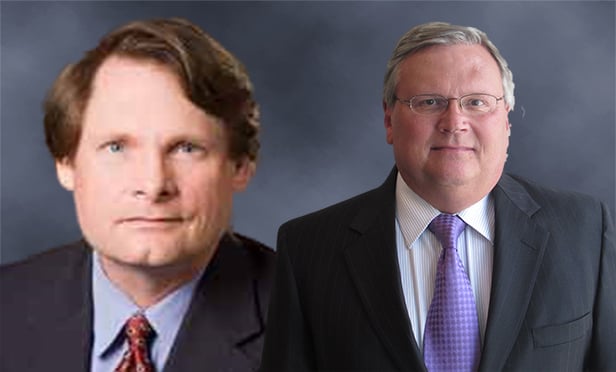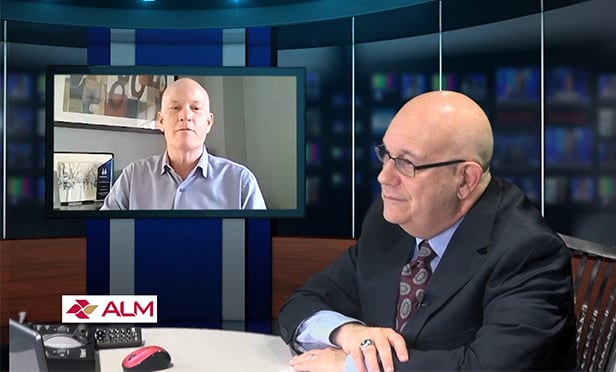What began as a project to make the company's new headquarters as energy-efficient as possible blossomed into an endeavor that created the first net-zero electric commercial building in the country. Net zero means that the building produces all the electricity it uses. Ferreira's system is said to be so efficient, in fact, that it ended up with a surplus of power after its first year in use, which it sold back to the electric company.
The key to the company's success doesn't lie in the solar panels alone, but in a combination of systems inside the building. "This is about sustainability, and sustainability goes beyond renewable energy," says John Grabowski, VP of sales and marketing of Noveda Technologies, Somerville, who served as project coordinator for Ferreira. "Sustainability looks at factors like energy efficiency, where materials come from, renewable energy and having them all work in conjunction."
The company uses a combination of renewable energy and high-efficiency systems to remain self-sufficient. Electricity is provided by the solar electric system; solar thermal produces hot water; and high-efficiency boiler pushes water through nine miles of tubing under the floor to heat the building.
Ferreira is able to keep its lights on during cloudy days thanks to a process created by the state known as net metering, which allows a company to stockpile extra energy it produces on sunny days. The electric company keeps a record of the extra energy returned to the grid, and when it's cloudy or dark out, Ferreira can draw from their energy account. "Essentially, we share our energy with other people, but we draw back when we need it," says Grabowski.
As one might expect, installing the solar panels and high-efficiency systems made the building more expensive to construct. On top of a $6 million cost for the building itself, the solar system cost $1.5 million and the cost of the high-efficiency system came to about $700,000. Ferreira received assistance in the form of a $1.6-million rebate from the state for the solar and the high-efficiency systems.
"A true partnership between public and private organizations was really what helped us attain this," says Grabowski. "They gave us enough assistance to make it a financially viable option, and in return, by producing energy, we're supporting the state. We're producing some of the electricity that the grid itself can't support. Right now, building new power plants in New Jersey is an issue, so having public or private buildings produce their own energy supports the energy goals of the state while also significantly reducing greenhouse gas emissions and carbon footprints."
Ferreira has already realized significant cost savings by becoming more self-sufficient. Grabowski estimates that the company saves about $75,000 a year in energy costs. In addition, the state provides solar renewable energy credits, which can be sold on the marketplace to those who need to make adjustments to their own carbon footprints. Sales of those credits net the company another $75,000 a year. Once the company's investment in the headquarters is fully paid back in the next five to seven years, that $150,000 a year will become profit.
The beating heart of the whole endeavor is the company's proprietary Noveda Tech Live Data System, which provides real time data of what's happening in the building, including how different systems are working, how much energy the building is using and how much the solar system is producing. It's displayed on a video screen in the building's lobby, attracting the attention of both visitors and employees.
Although those behind the data system originally went shopping for one that already existed, nothing they found on the market quite met their needs. So, three Ferreira employees--building architect Joe Grabowski (who is also vice president of the Ferreira Group and John Grabowski's brother); Ed Brzezowski, a senior professional engineer; and Rich Gorde, a senior programmer--invented a system of their own. The result spawned an entirely new company, Noveda Technologies, and has attracted the notice of Fortune 500 companies, New Jersey state government and the federal government.
The building itself also has attracted a significant amount of attention and has already been the recipient of numerous awards. It's one of only two buildings in the country to have received a perfect 100 Energy Star score.
"At the heart of it, we're a road and bridge company," says Grabowski. "We're not some scientific experiment or a biodome out in Arizona. We're a normal business. Our building is ordinary. Our systems allowed us to reduce our greenhouse gas emissions by one million lbs. per year. That's equivalent to taking 100 cars off the road for a full year.
"If all 10 buildings on our street did this, that would be 1,000 cars," he concludes. "If you did all the buildings in New Jersey and part of Delaware, it would be like the eastern seaboard had no cars in it. You could have a significant effect."
© 2025 ALM Global, LLC, All Rights Reserved. Request academic re-use from www.copyright.com. All other uses, submit a request to [email protected]. For more information visit Asset & Logo Licensing.







